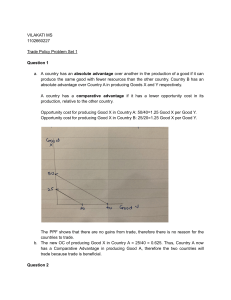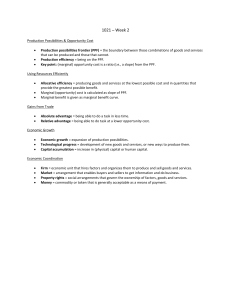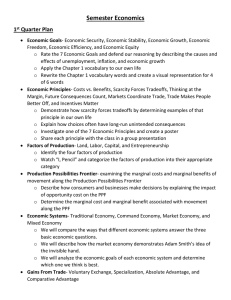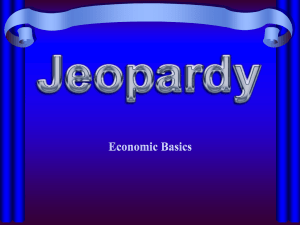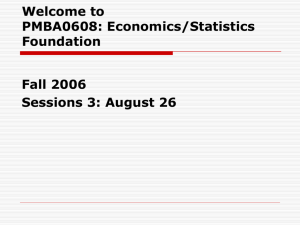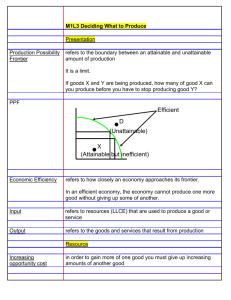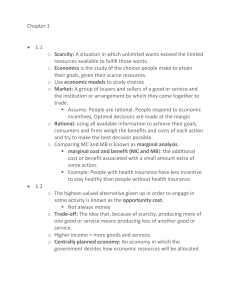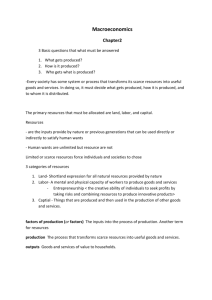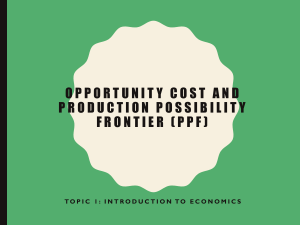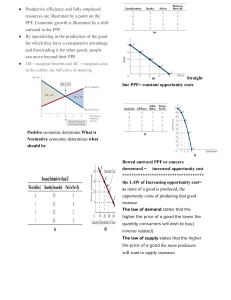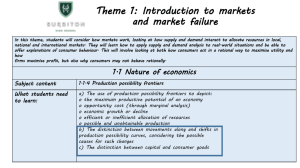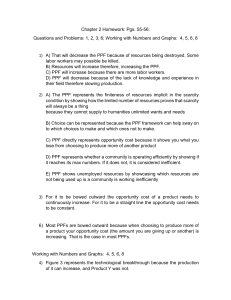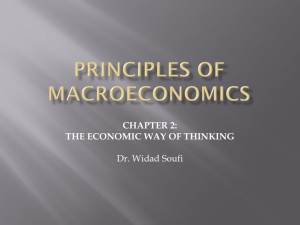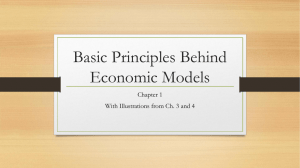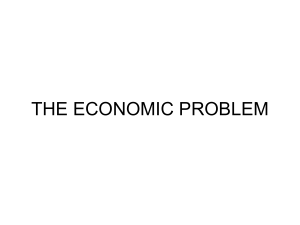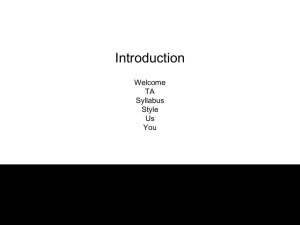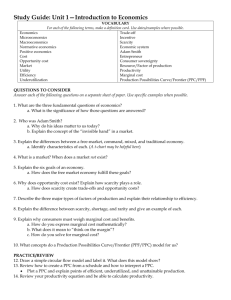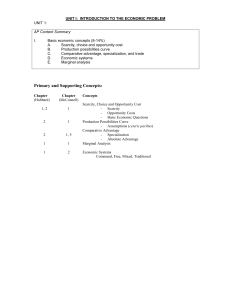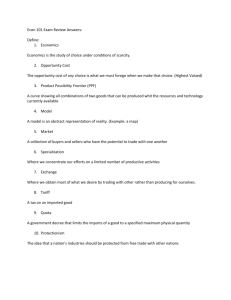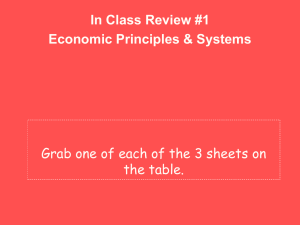Economic Fundamentals
advertisement
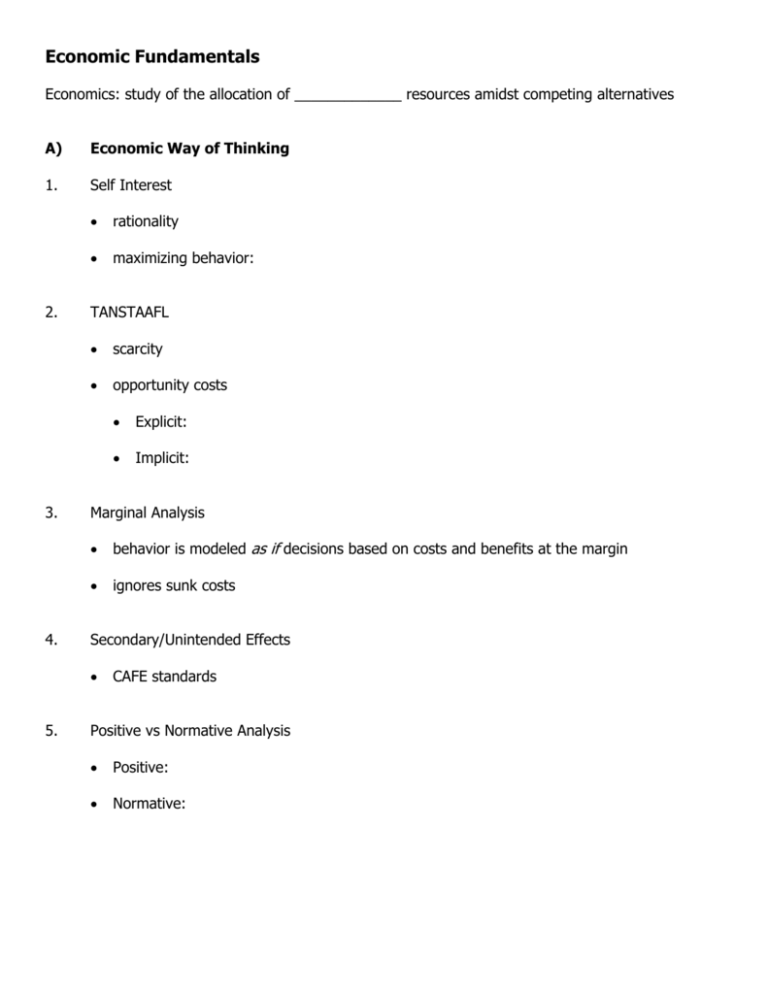
Economic Fundamentals Economics: study of the allocation of _____________ resources amidst competing alternatives A) Economic Way of Thinking 1. Self Interest 2. 3. 4. rationality maximizing behavior: TANSTAAFL scarcity opportunity costs Explicit: Implicit: Marginal Analysis behavior is modeled as if decisions based on costs and benefits at the margin ignores sunk costs Secondary/Unintended Effects 5. CAFE standards Positive vs Normative Analysis Positive: Normative: B) Economic Model of Crime Economic vs Accounting Profit Decision Rule: If MB > MC continue the activity 1. Assumptions: Car = Income = Jail = Prob of Arrest = Prob of Conviction = 2. Marginal Calculations MB = Prediction: MC = 3. Policy Implications: How to Deter Crime? a) b) c) d) C) Production Possibility Frontier 1. shows all combinations of two goods that can be produced from a given set of resources, holding technology constant Assumptions: resources are fixed: ___________, _____________, _____________, _____________ technology is fixed full employment Cars Beer 2. Illustrates: scarcity: attainable vs unattainable opportunity costs (tradeoffs): movement along the PPF Law of Increasing Opportunity Costs: concave PPF implies that resources are not perfect ________________. choice: What, How, For Whom? Allocation Mechanisms: Tradition Plan (command & control) Market (invisible hand): 3. Shifts in the PPF occurs whenever _________________ or ___________________ changes. economic growth: current consumption vs capital goods (investment) Note: Examples 4. Circular Flow Model a) The Actors HH Firms Government b) The Locale Goods Markets Factor Markets HH Factor Market Govt Firms Goods Market D) Comparative Advantage & the Gains From Trade Why trade? Absolute Advantage Comparative Advantage: lowest opportunity cost activity Specialization leads to increased production; Trade leads to increased consumption Lab Experiment #1
